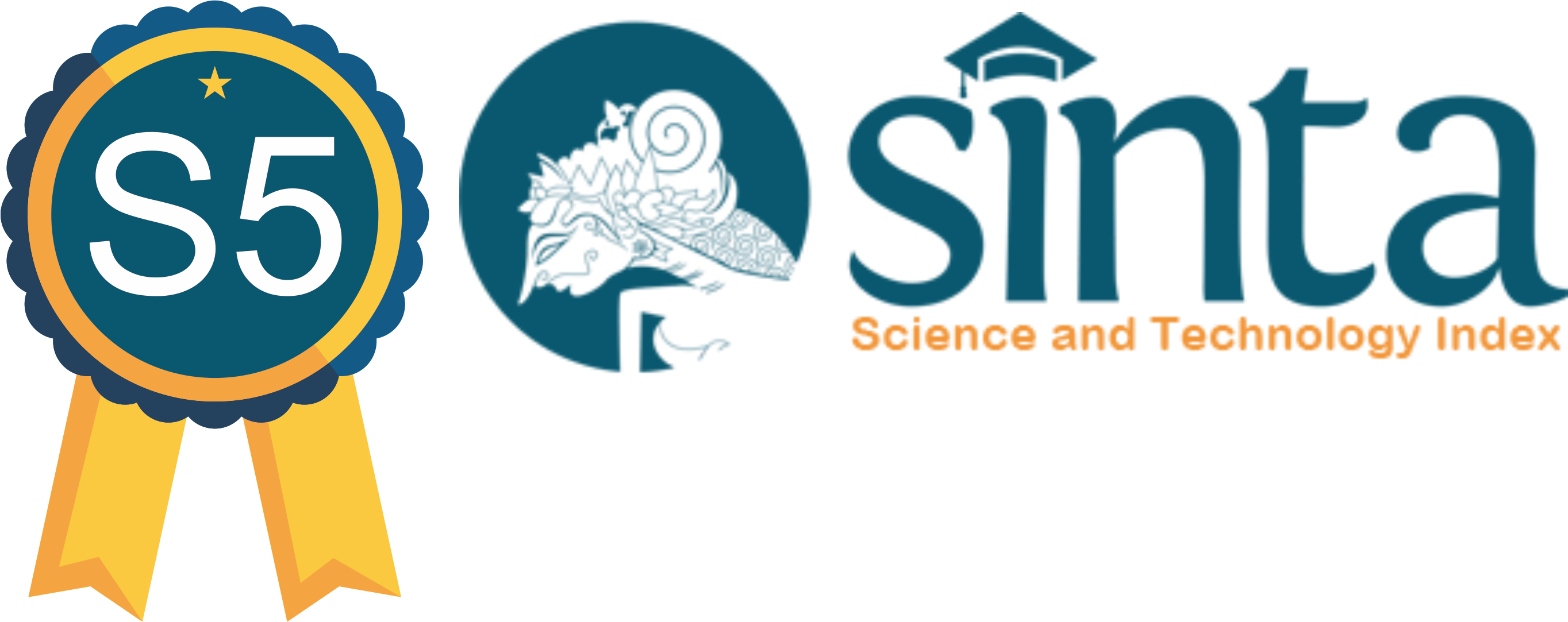Feeding Patterns and Stunting among Toddlers in Tanjung Karangan Village
Abstract
. The UNICEF report states that the prevalence of stunting in children under the age of five (toddlers) in 2019 reached 21.3%. Toddlers are active consumers where they can choose the food they like. Parenting patterns of feeding toddlers play an important role in their growth and development, because they are closely related to the health and intelligence of children. Inappropriate feeding parenting will have an impact on nutritional deficits so that it will trigger stunting. The purpose of this study was to determine the relationship between feeding parenting and the incidence of stunting. This study is a quantitative study with a cross-sectional research design. Respondents were 48 people, who were selected by purposive sampling technique. The data were processed by statistical tests and analyzed descriptively. The results showed that there were 22.9% of respondents experiencing stunting and most of the respondents had a feeding pattern in the right category (79.2%). The results of the analysis stated that the parenting style of feeding (p < 0.001), family income (p = 0.015), and the mother's last education (p = 0.001) were related to the incidence of stunting. The conclusion of this study is that feeding parenting in the inappropriate category has a risk of stunting 38 times compared to toddlers who are given feeding parenting in the appropriate category (PR = 38,000, 95% CI: 5,494 – 262,851). The results of this study are expected to be an evaluation for parents so that they can pay attention to feeding parenting patterns so that children can grow and develop according to their age stages.
Downloads
References
Dinas Kesehatan Provinsi Sumatera Selatan. (2019). Laporan Provinsi Sumatera Selatan. Lembaga Penerbit Badan Penelitian Dan Pengembangan Kesehatan, 19(9), 1–7. http://ejournal2.litbang.kemkes.go.id/index.php/lpb/article/view/3665
Ernawati, F., Rosmalina, Y. dan Permanasari, Y. (2013). Effect of Pregnant Women’s Protein Intake and Their Babby Length at Birth to the Incidence of Stunting Among Chlidren Age 12 Months. Penelitian Gizi Dan Makanan, 36(1), 1–11.
Fadilah, Tara Nur Fadilah., Sri Dinengsih., R. C. (2015). Hubungan Anatara Karakteristik Maternal dengan Kejadian Stunting pada Balita di Posyandu Kenanga ! Wilayah Puskesmas Cilandak bara. Jurnal Ilmiah Kesehatan & Kebidanan, 9(2), 49–58.
Hapsari. (2018). Hubungan Pendapatan Keluarga, Pengetahuan Ibu Tentang Gizi, Tinggi Badan Orang Tua, dan Tingkat Pendidikan Ayah dengan Kejadian Stunting Pada Anak Umur 12-59 bulan. Skripsi, Universitas Muhammadiyah Surakarta, 1–26.
Husnaniyah, D., Yulyanti, D., & Rudiansyah, R. (2020). Hubungan Tingkat Pendidikan Ibu dengan Kejadian Stunting. The Indonesian Journal of Health Science, 12(1), 57–64. https://doi.org/10.32528/ijhs.v12i1.4857
Lestari, W., Margawati, A., & Rahfiludin, Z. (2014). Faktor risiko stunting pada anak umur 6-24 bulan di kecamatan Penanggalan kota Subulussalam provinsi Aceh. Jurnal Gizi Indonesia (The Indonesian Journal of Nutrition), 3(1), 37–45. https://doi.org/10.14710/jgi.3.1.126-134
Mirna, Walalangi, R. G. M., Sineke, J., & Mokodompit, R. C. (2019). Pola Asuh Dan Pendapatan Keluarga Dengan Kejadian Stunting Pada Anak Usia 2-5 Tahun Di Wilayah Kerja Puskesmas Bohabak. Jurnal GIZIDO, 11(2), 88–95. https://doi.org/10.47718/gizi.v11i2.778
Niga, D. M., & Purnomo. (2016). KESEHATAN, DAN KEBERSIHAN ANAK DENGAN KEJADIAN PUSKESMAS OEBOBO KOTA KUPANG CORRELATION OF CHILD FEEDING PRACTICE, HEALTH CARE PRACTICE, AND HYGIENE CARE PRACTICE WITH STUNTING IN CHILDREN AGES 1-2 YEARS OF WORK IN THE AREA OF PUBLIC HEALTH OEBOBO KUPA. 151–155.
Noviyanti, L. A., Rachmawati, D. A., & Sutejo, I. R. (2020). An Analysis of Feeding Pattern Factors in Infants at Kencong Public Health Center. Journal of Agromedicine and Medical Sciences, 6(1), 14. https://doi.org/10.19184/ams.v6i1.9597
Pribadi, R. P. (2016). Hubungan Pola Asuh Pemberian Makan oleh Ibu dengan Kejadian Stunting pada Balita Usia 2-5 Tahun. Jurnal Keperawatan ’Aisyiyah, 6(April), 79–86.
Purwani, Erni, & Mariyam. (2013). Pola Pemberian Makan Dengan Status Gizi Anak Usia 1 Sampai 5 Tahun Di Kabunan Taman Pemalang. Jurnal Keperawatan Anak, 1(1), 30–36. http://download.portalgaruda.org/article.php?article=98477&val=5091
Rahman, F. D. (2018). Pengaruh Pola Pemberian Makanan Terhadap Kejadian Stunting pada Balita. The Indonesian Journal of Health Science, 10(1), 15–24.
Septikasari, M., Akhyar, M., & Wiboworini, B. (2016). Effect of Gestational Biological, Social, Economic Factors on Undernutrition in Infants 6-12 Months in Cilacap. Indonesian Journal of Medicine, 01(03), 184–194. https://doi.org/10.26911/theijmed.2017.02.01.06
Susanty, A., Fadlyana, E., & Nataprawira, H. M. (2014). Manfaat Intervensi Dini Anak Usia 6 – 12 Bulan dengan Kecurigaan Penyimpangan Perkembangan Early Intervention Benefits for Children 6 – 12 Months Old with Suspect Developmental Delay. Mkb, 46(2), 63–67.
UNICEF. (2020). Levels and trends in child malnutrition: Report 2020. 21–25. https://www.unicef.org/media/79371/file/UN-IGME-child-mortality-report-2020.pdf.pdf
Welasasih, B. D., & Bambang, D. R. W. (2012). Beberapa Faktor yang Berhubungan dengan Status Gizi Balita Stunting. Departemen Gizi Kesehatan, 8, 99–104.
Widanti, Y. A. (2016). Prevalensi, Faktor Risiko, dan Dampak Stunting Pada Anak Sekolah. Jurnal Teknologi Dan Pangan, 1(1), 23–28.
Journal of Health and Behavioral Science (JHBS) is licensed under a Creative Commons Attribution-ShareAlike 4.0 International License. You are free to copy, transform, or redistribute articles for any lawful purpose in any medium, provided you give appropriate credit to the original author(s) and JHBS, link to the license, indicate if changes were made, and redistribute any derivative work under the same license. Copyright on articles is held by the authors. By submitting to JHBS, authors grant any third party the right to use their article to the extent provided by the Creative Commons Attribution-ShareAlike 4.0 International License.

 Elta Larasati(1)
Elta Larasati(1)








